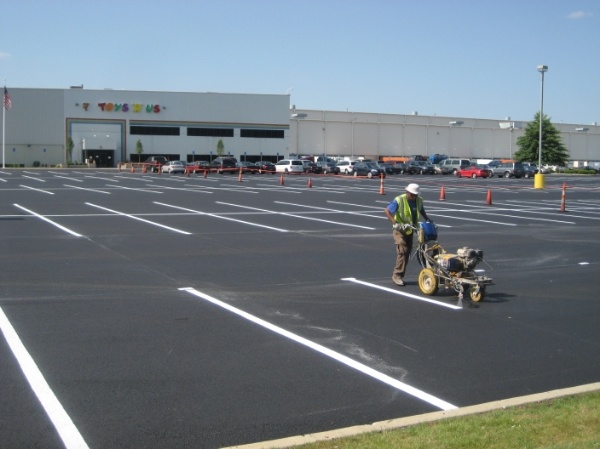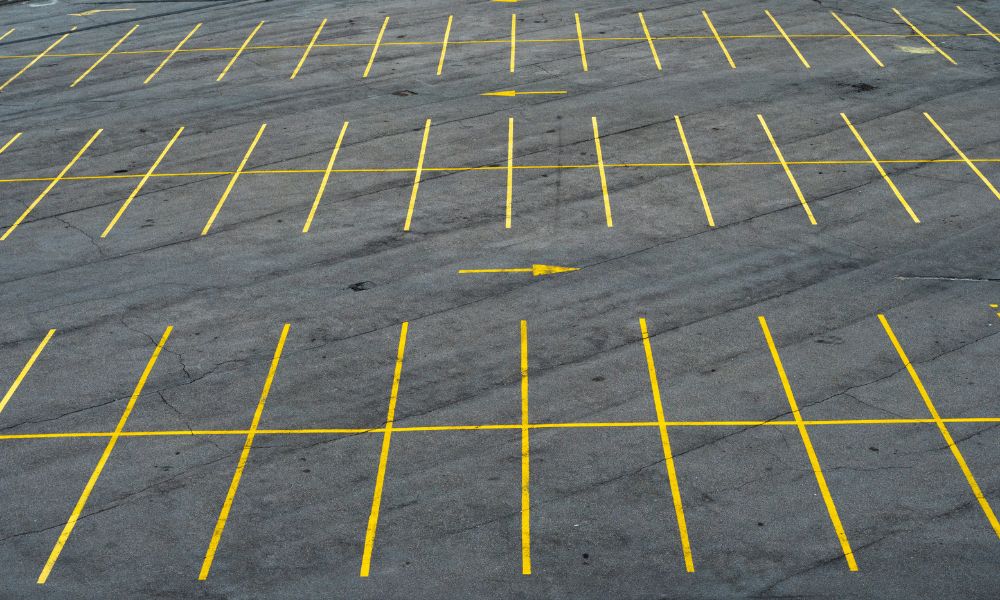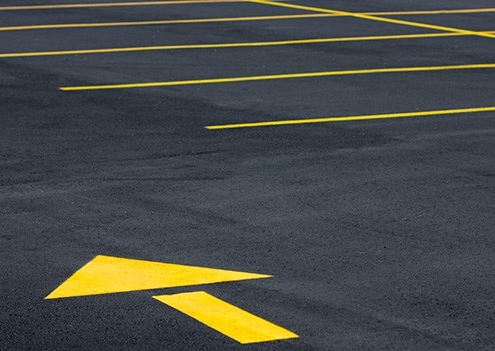Comprehensive Road Painting Services for Clear and Safe Traffic Monitoring Solutions
A Comprehensive Overview to the very best Practices in Roadway Painting for Public Highways
It is vital to think about not just the instant effect of roadway markings but likewise their long-lasting upkeep and visibility under differing environmental conditions. Understanding these elements can significantly influence the performance of roadway markings, yet many are uninformed of the subtleties involved.
Relevance of Road Paint
Road paint plays a vital role in keeping web traffic safety and performance, with studies indicating that well-marked roads can lower accidents by up to 30%. The clear difference of lanes, pedestrian crossings, and other vital markings offers to assist motorists and pedestrians, fostering a foreseeable environment on the road. This predictability is necessary for efficient navigating and helps lessen complication, which can frequently result in accidents.
Additionally, road markings are important in sharing crucial info, such as rate limitations and directional support. They improve visibility, especially in negative climate conditions or throughout nighttime driving. The presence of reflective materials in road paints further enhances visibility, permitting drivers to recognize crucial markings that influence their habits on the road.

Selecting the Right Materials
Selecting appropriate materials for road paint is vital to achieving sturdy and effective markings. The selection of materials directly affects the presence, durability, and security of roadway markings. Usual alternatives consist of water-based paints, solvent-based paints, and polycarbonate materials, each with one-of-a-kind buildings and applications.
Water-based paints are eco-friendly, quick-drying, and appropriate for the majority of climate condition, making them perfect for city settings. They might need even more constant upkeep due to tear and put on. Solvent-based paints, while offering superb bond and toughness, can present ecological and wellness issues due to volatile natural substances (VOCs)
Polycarbonate products are significantly preferred due to their resilience and long-lasting efficiency. These materials are heated before application, enabling for a solid bond with the sidewalk. Their reflective residential properties enhance visibility, especially during the night.
When choosing products, factors such as web traffic volume, environment conditions, and the certain kind of road need to be taken into consideration. Carrying out detailed research study and consulting with suppliers can aid make certain that the chosen products satisfy local regulations and requirements, ultimately contributing to much safer roadways and improved driver awareness.
Reliable Application Methods
Reliable application strategies play a vital function in making certain that roadway markings attain optimal efficiency and long life. This strategy decreases overspray and makes certain that the paint is used uniformly, which is important for keeping roadway safety and security.
Prior to application, it is important to prepare the surface area appropriately. This includes cleansing the roadway of dampness, oil, and particles to improve adhesion. In addition, temperature level and humidity ought to be taken into consideration during the application process to accomplish the most effective outcomes.
Using the suitable tools is also crucial. Line stripers equipped with flexible widths permit additional resources specific markings that comply with regulative criteria. Furthermore, it is important to adjust the tools frequently to make sure consistency in paint density.
Timing and Ecological Elements
Correct timing and factor to consider of ecological factors are necessary for the effective application of roadway markings. The performance of roadway paint largely relies on temperature level, wind, and humidity problems at the time of application. Ideally, temperatures need to be between 50 ° F and 85 ° F(10 ° C to 29 ° C) for optimum bond and curing. When temperature levels are too reduced, paint may not cure appropriately, causing early wear and decreased exposure.
Humidity levels additionally play a vital function; high moisture can hinder drying out times, while exceedingly completely dry problems might create quick dissipation of solvents, impacting the paint's performance. Wind can present impurities and debris, potentially compromising the top quality of the markings. Consequently, it is a good idea to select tranquil days for application.

Additionally, considering seasonal variants is important. Road paint during wet periods might lead to washouts, while severe warmth can cause paint to sore. Scheduling painting jobs throughout desirable climate condition can considerably boost the long life and effectiveness of road markings. By meticulously reviewing these variables, agencies can make sure that road markings are applied effectively and keep their presence and toughness gradually.
Maintenance and Long Life Approaches

One effective approach is to implement a methodical repainting program based on website traffic volume and environmental variables - Road painting near me. Higher web traffic locations might require more regular upkeep to neutralize the abrasive results of vehicles and climate condition. Furthermore, using durable products, such This Site as polycarbonate and epoxy paints, can significantly expand the life-span of roadway markings
Cleaning road surfaces to get rid of debris and impurities is another crucial element of maintenance. This ensures ideal attachment of new paint and improves the total efficiency of the markings. In addition, using innovative modern technologies, such as automated monitoring systems, can streamline the surveillance procedure and maximize upkeep routines.
Incorporating these strategies will certainly not just boost the visibility and safety of roadway markings however likewise decrease lasting expenses connected with constant repainting and repair work. (Parking lot line striping)
Verdict
View Line painting Abbotsford in a full screen map
The option of proper materials, incorporated with effective application strategies and consideration of environmental elements, adds to the toughness and exposure of roadway markings. Regular maintenance and examinations better extend the lifespan of these markings, eventually decreasing crashes and improving overall roadway use.
The presence of reflective products in roadway paints even more enhances visibility, allowing drivers to determine critical markings that affect their behavior on the roadway.
Choosing suitable products for roadway painting is necessary to accomplishing resilient and effective markings.While the preliminary application Check This Out of roadway markings is essential, continuous upkeep techniques are similarly essential to guarantee their durability and presence. Furthermore, the use of long lasting materials, such as thermoplastic and epoxy paints, can dramatically extend the life expectancy of roadway markings.
The selection of suitable materials, incorporated with effective application strategies and consideration of ecological variables, contributes to the longevity and exposure of road markings.